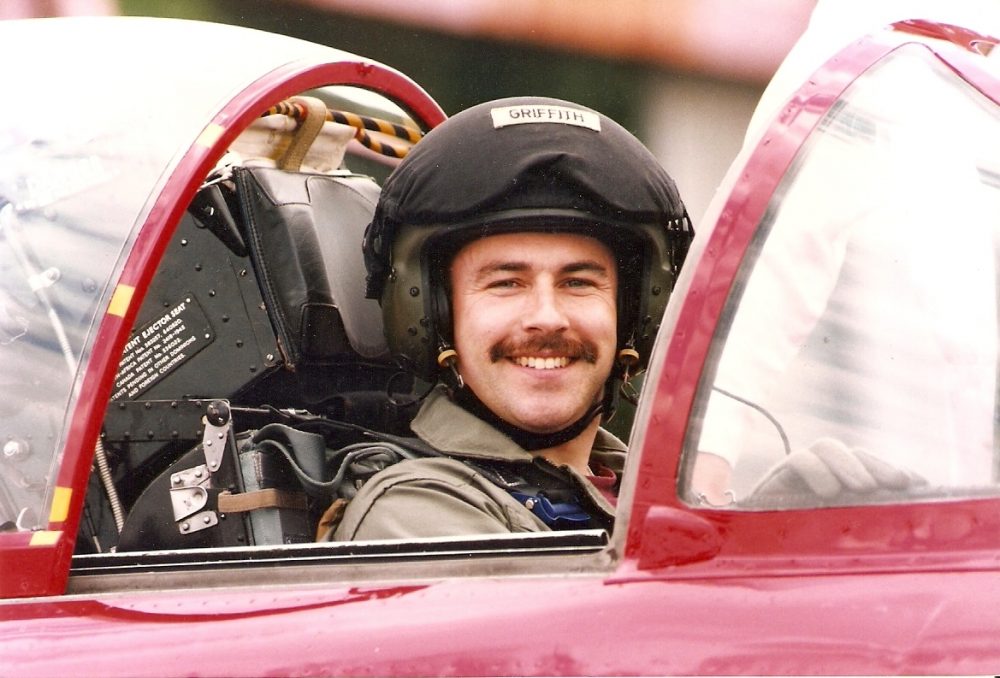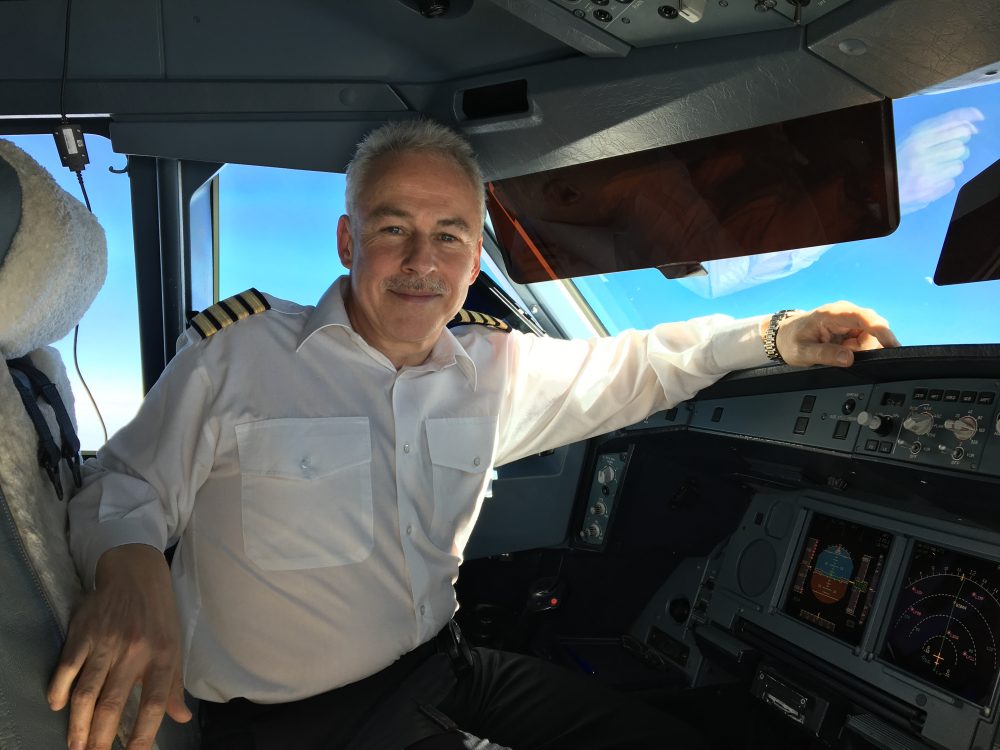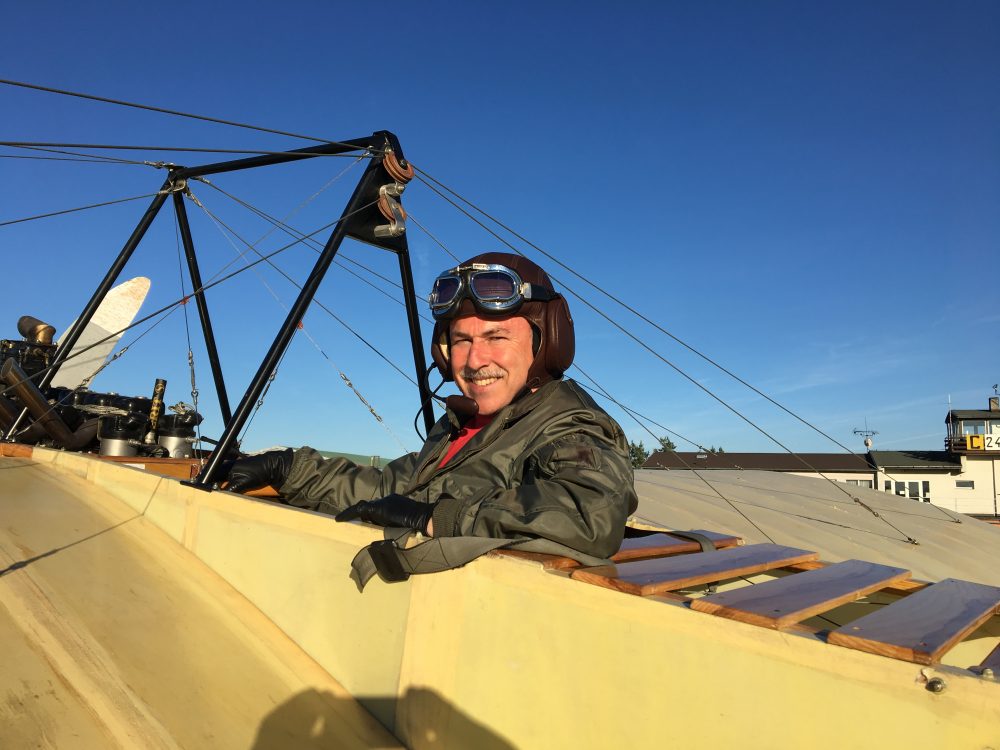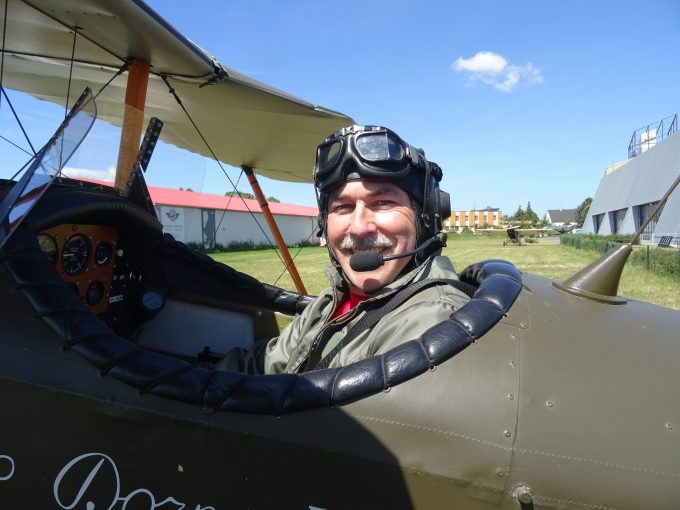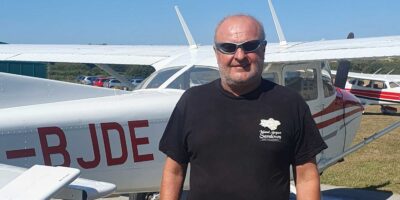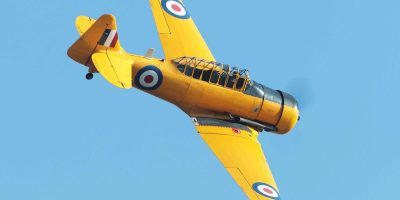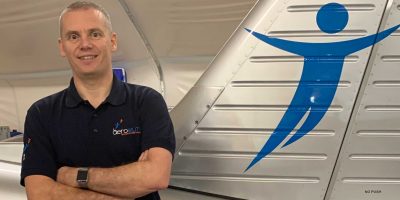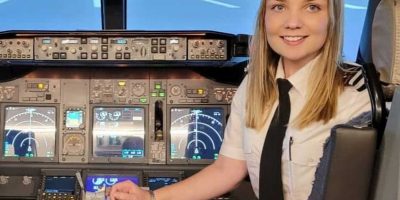How did you get into aviation?
From the age of 11, the only thing I wanted was to get into aviation. However, I couldn’t afford the civilian way and didn’t get a scholarship.
At 18, I joined the RAF University Air Cadet Scheme. On my first flight, the pilot did a ‘run and break’. which left me feeling extremely ill, pretty airsick and quite scared. “I’m going to die!” Followed by, “Oh no, I’ve signed up for 20 years of this…”.
How did your flight training go?
Once I got over that first flight, it went very well. Flying came reasonably natural – I had thought of nothing else for many years, so mentally there was no other option. University Air Squadron was very similar to proper military training: clinical, syllabus-orientated, and disciplined. This was great, as it set me up for a future in test flying, where you also need a disciplined approach.
“Kneeboards act like a memory chip in my brain, unlocking my flying skills”
Tell us about your first solos?
My first ever solo wasn’t a big surprise, it seemed like a natural progression.
My second, in the Jet Provost, was such a shock. After a 55-minute flight the instructor said, “Park over there.” Then got out. I assumed I’d messed up, so when he told me to solo, I just sat there in utter disbelief. My third solo, in a single-seat Harrier, was extreme. After only two trips in the two-seat Harrier, I was alone in this powerful war machine which is 2,500lb lighter and had incredible thrust. I remember sitting at the end of the runway, wondering what’s wrong with the aeroplane as it was rocking with raw power – it went off like a scalded cat! The undercarriage limit was 250kt, but the power was so phenomenal, you got to that in an instant. I eventually got the speed under control at 12,000ft…


